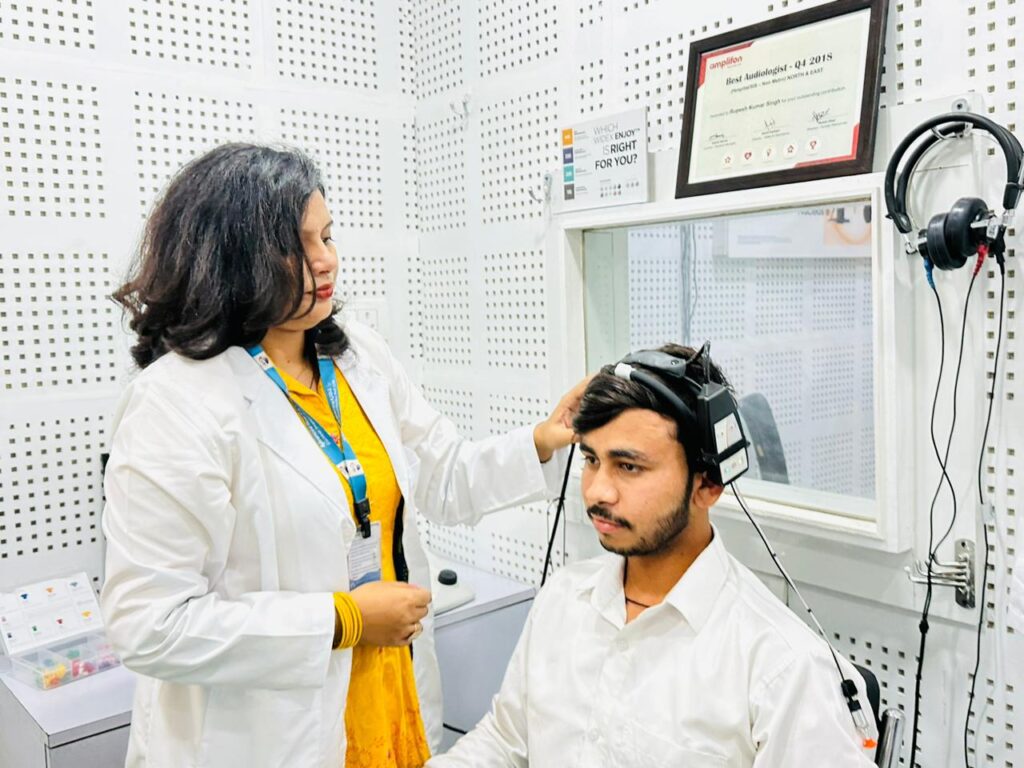- Hearing Test
Video Otoscopy
Video otoscopy is a diagnostic procedure used to examine the ear canal and eardrum using a specialized instrument called an otoscope that has a built-in video camera. Traditional otoscopy involves using a handheld otoscope with a light source to visually inspect the ear canal and eardrum. Video otoscopy takes this a step further by incorporating a tiny camera that provides a live or recorded video feed of the ear canal and eardrum.

How Video Otoscopy Works?
- Instrumentation
A video otoscope typically consists of a handheld device that resembles a traditional otoscope but has a miniature camera at its tip. The camera is connected to a monitor or display where the examiner can see the live or recorded images.
- Examination Process
The healthcare professional inserts the video otoscope gently into the ear canal. The camera at the tip of the otoscope captures real-time images or videos of the ear canal and eardrum. This provides a more detailed and magnified view compared to traditional otoscopy.
- Visualization
The live or recorded video feed allows the examiner to visualize the ear canal and eardrum on a larger screen. This can be particularly useful for patient education, as individuals can see and better understand any issues or abnormalities identified during the examination.
- Documentation
Video otoscopy enables healthcare providers to document and store visual records of the ear examination. This documentation can be useful for tracking changes over time, monitoring treatment progress, and sharing information with other healthcare professionals if necessary.
- Patient Communication
Video otoscopy enhances communication between healthcare providers and patients. By directly showing patients the condition of their ear canal and eardrum, it can improve understanding and facilitate discussions about treatment options.
Video otoscopy is commonly used by ear, nose, and throat (ENT) specialists, audiologists, and other healthcare professionals involved in the assessment and management of ear-related conditions. It is a valuable tool for diagnosing issues such as ear infections, blockages, earwax buildup, and abnormalities in the ear canal or eardrum.

- Importance
What Can the Impedance Test Reveal?
- Middle Ear Function
The Impedance Test helps determine if there are any issues with the movement of the eardrum or the middle ear bones (ossicles). It can detect problems such as fluid in the middle ear, perforated eardrum, or a blockage in the ear canal.
- Eustachian Tube Dysfunction
The test can identify conditions like Eustachian tube dysfunction, which may lead to ear infections and pressure imbalances.
- Hearing Aid Fitting
Impedance testing is valuable for hearing aid users. It ensures that hearing aids are appropriately fitted, preventing discomfort and optimizing their performance.
